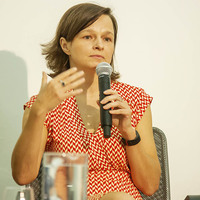
Andrea Woody
Phone: 206-685-2663
Address: Philosophy Department
Box 353350
University of Washington
Seattle, WA 98195
Address: Philosophy Department
Box 353350
University of Washington
Seattle, WA 98195
less
Related Authors
David Seamon
Kansas State University
Armando Marques-Guedes
UNL - New University of Lisbon
Eros Carvalho
Universidade Federal do Rio Grande do Sul
Brian J. Reiser
Northwestern University
Beate Krickel
TU Berlin
Marco Sgarbi
Università Ca' Foscari Venezia
Miguel Gallegos
Universidad Nacional de Rosario
Alice Koubová
Academy of Sciences of the Czech Republic
Kenneth Aizawa
Rutgers at Newark
Paul Thom
The University of Sydney










Uploads
Papers by Andrea Woody
Keywords: explanation, explanatory power, functional perspective, idealization, ideal gas law
In this paper we suggest an empirical thesis: Galileo understood something important when he used the balance as the basic equilibrium model in order to understand all the phenomena of motion. Galileo used the balance model to make intelligible problems of dynamics as well as kinematics (as we anachronistically call them).
We believe that using the Galilean balance equilibrium model today in physics classes at the secondary and college levels (and probably even at the elementary school level) would provide students with a model of intelligibility that would unify their thinking about motion and, at the same time, provide them with a general procedural schema for solving motion problems.
Keywords: explanation, explanatory power, functional perspective, idealization, ideal gas law
In this paper we suggest an empirical thesis: Galileo understood something important when he used the balance as the basic equilibrium model in order to understand all the phenomena of motion. Galileo used the balance model to make intelligible problems of dynamics as well as kinematics (as we anachronistically call them).
We believe that using the Galilean balance equilibrium model today in physics classes at the secondary and college levels (and probably even at the elementary school level) would provide students with a model of intelligibility that would unify their thinking about motion and, at the same time, provide them with a general procedural schema for solving motion problems.